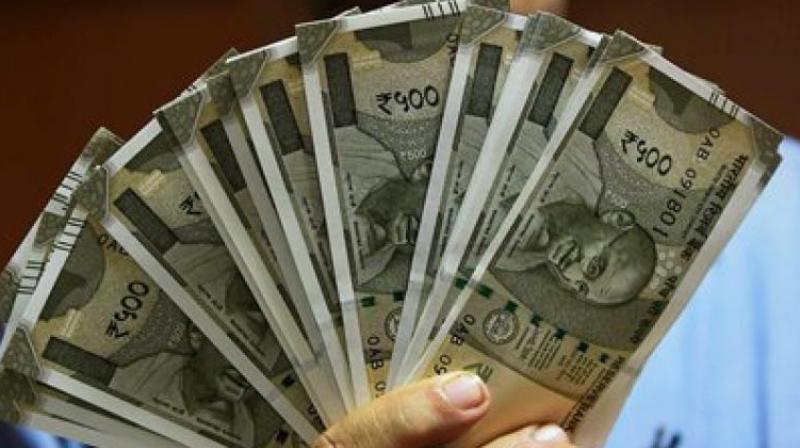
NEW DELHI – Banks have started dispensing more of Rs 500 notes instead of Rs 2,000 denomination notes, a move seen as gradual phasing out of the high denomination currency.
The Reserve Bank of India (RBI) in an RTI response last year had said that the central bank had stopped printing Rs 2,000 denomination currency notes.
Although there has been no dictate from the Finance Ministry, banks on their own have decided to fill their ATMs with smaller denomination notes for the convenience of customers, sources said.
Some banks have already started recaliberation of their ATMs and other banks will also follow the suit, sources said.
State-owned Indian Bank has already announced that its has decided to stop using Rs 2,000 notes in their ATMs.
Getting change for a Rs 2,000 note is an issues, keeping that in mind some banks have stopped using Rs 2,000 notes in their ATMs.
According to the RBI’s RTI reply, 3,542.991 million notes of Rs 2,000 denomination were printed during 2016-17.
However, 2017-18 saw a substantial reduction in printing and only 111.507 million notes were produced, which further reduced to 46.690 million notes in 2018-19.
This indicates that while these high denomination notes would continue to be a legal tender but will be phased out eventually.
The move is seen as an attempt to prevent hoarding of the high-value currency and thus, curb black money. The government had in November 2016 demonetised Rs 1,000 and Rs 500 denominations notes.
Replying to a question in Parliament, Minister of State for Finance Anurag Singh Thakur in December said there is no proposal to withdraw Rs 2,000 denomination notes.
“This is the real worry (about demonetisation) which has surfaced now. I think that you should not worry about it,” Thakur told the Rajya Sabha while replying to a question whether the government was planning to withdraw Rs 2,000 notes in future.
According to the reply, notes in circulation (NIC) as on November 4, 2016 were Rs 17,74,187 crore which have now increased to Rs 22,35,648 crore as on December 2, 2019.
The NIC had grown at an average growth rate of 14.51 per cent year on year wise since October 2014 till October 2016.
At this rate, NIC would have increased to Rs 25,40,253 crore as on December 2, 2019.
Follow this link to join our WhatsApp group: Join Now
Be Part of Quality Journalism |
Quality journalism takes a lot of time, money and hard work to produce and despite all the hardships we still do it. Our reporters and editors are working overtime in Kashmir and beyond to cover what you care about, break big stories, and expose injustices that can change lives. Today more people are reading Kashmir Observer than ever, but only a handful are paying while advertising revenues are falling fast. |
| ACT NOW |
| MONTHLY | Rs 100 | |
| YEARLY | Rs 1000 | |
| LIFETIME | Rs 10000 | |













